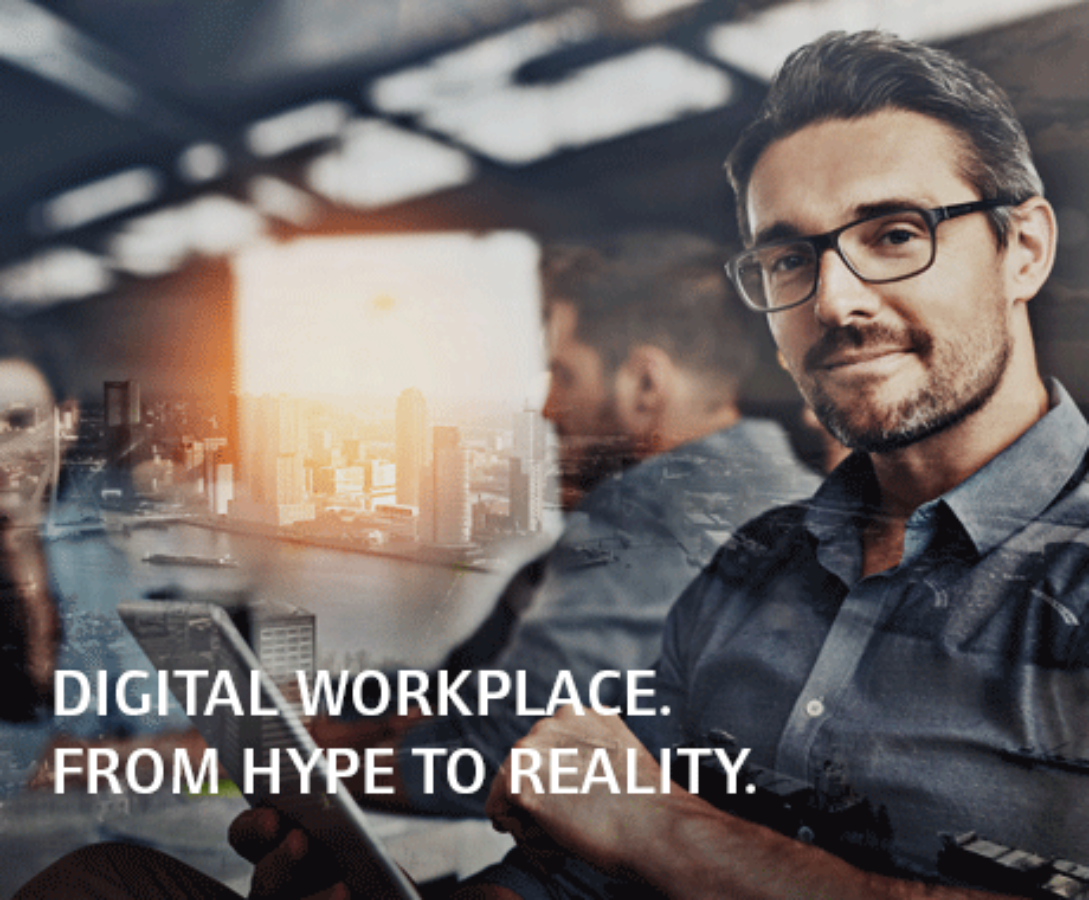When there is a lack of skilled workers, applicants can make considerable demands of their future employers. Not only will they expect performance-based pay but also the option to work remotely and under a flexitime agreement, to ensure a good work-life balance. To offer such flexible models, companies need a state-of-the-art working environment: the digital workplace. This allows employees to work effectively by giving them access to the latest IT technology while enabling them to work from anywhere in the world.
What your employees expect from the digital workplace
The expectations for such a digital workplace are high. Employees expect nothing less than powerful, cutting-edge technology, such as cloud computing. Applications that are easy to use and provide a positive user experience that also enables fast and efficient working, both on a desktop PC and on the go. Naturally, the IT technology and apps used must also be kept up to date and upgraded as required.
The hardware has to be right too. Employees expect reliable, high-quality equipment, such as desktop PCs, smartphones, tablets, laptops, monitors, and printers, that allow them to work effortlessly. If a device breaks, then a pre-configured replacement should be ready so that work can continue seamlessly.
Mobile devices provided by the employer should also be enabled for personal use. There is a perfect solution to this: COPE (corporate-owned, personally enabled). With this model, the company provides employees with mobile devices that can also be used outside of work. This type of model increases flexibility and productivity and can boost employee satisfaction. At the same time, it guarantees the security of business and personal data.
THE TECHNOLOGY AND THE COSTS OF THE DIGITAL WORKPLACE
The examples show that delivering digital workplaces and adapting existing processes is complex and ties up a lot of resources. It starts with the selection and procurement of IT equipment, IT solutions, and apps then moves on to commissioning, maintenance, and support, and finishes with the rollback and secure data deletion at the end of the lifecycle.
There are also administrative aspects that need to be considered, such as planning and controlling the cost of devices, technology, software, and connectivity, and ensuring maintenance and support over the entire useful life. How many digital workplaces are there? What do they cost? How can the expense of each asset be monitored and allocated correctly? These are just some of the questions that you need to take into account.
Linking technological and accounting aspects
In practice, IT management and financial management are usually run separately, often with negative consequences: processes along the technology lifecycle lack transparency, the IT, accounts, and procurement departments struggle with a heavy administrative burden, and potential savings remain untapped.
When it comes to managing technology investments, huge optimization potential can be unlocked if companies choose a concept that links the technological and administrative spheres. With this type of concept, technical data about asset type, features, and consumables flows to a central point together with financial data regarding leasing costs, funding periods, and cost centers. This brings transparency to the processes along the technology lifecycle and enables the efficient and target-oriented management of technology investments, for example in the digital workplace.
Optimizing technology investment management
Companies looking to embark on such an undertaking are well advised to consult an experienced partner who has wide-ranging expertise in funding and managing technology investments throughout the IT lifecycle, and who offers reliable advice to support the development of optimization plans. In addition to the provision of harmonized, state-of-the-art hardware and software, and the optimization of processes, the implementation of a digital workplace culture is a key element. Service providers such as CHG-MERIDIAN can help to identify the requirements of the various stakeholders and integrate them into a customized business concept.
Contact us!
Feel free to contact us in case of questions!
Geoffrey Umba
Country Service Manager
- CHG-MERIDIAN Belux NV
- Boechoutlaan 105, Block D, Bus 01.04
- 1853 GRIMBERGEN
-
- geoffrey.umba@chg-meridian.com



